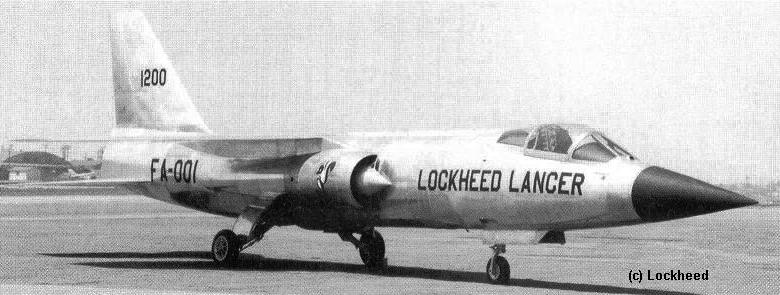The Lockheed Lancer may have outclassed the majority of aircraft used by air forces throughout the world.
The F-104 Starfighter, a supersonic air superiority fighter, was a technological marvel when it first flew in the 1950s.
It was armed with a six-barrel M-61 20mm Vulcan cannon and performed the roles of a tactical fighter and a day-and-night interceptor when coupled with heat-seeking Sidewinder missiles.
The first XF-104 made its first flight in 1954, after which the F-104’s development started in 1952.
It established several records, including the world altitude record of 103,395 feet (set by an F-104C on Dec. 14, 1959) and the world speed record of 1,404.19 mph (made by an F-104A on May 18, 1958). The Starfighter was also the first aircraft to hold the official world records for speed, altitude, and time-to-climb at the same time.
About 300 one- and two-seat Starfighters were bought by the U.S. Air Force (USAF). The military aid program also saw the construction of 1,700 F-104s in the United States and elsewhere for a number of countries, including Canada, West Germany, Italy, Norway, the Netherlands, Belgium, Denmark, Greece, Turkey, Spain, Taiwan, and Japan.
Even though the Starfighter gave these countries a fighter with astounding performance and highly advanced capabilities, the Western European market required a fighter that was efficient and simple to operate. Even in the hands of an experienced pilot, the F-104 had repeatedly shown to be challenging to fly, let alone in their absence. This fact, along with the Starfighter’s advancing age, caused Lockheed to present (in 1971) a proposal for a replacement for the F-104 called CL-1200 Lancer, as detailed by Phillip Friddell in his book F-104 Starfighter In Action.
The Lancer was suggested to employ most F-104 parts possible. Considering that the type was still being produced in both Germany and Italy, this objective could be easily and swiftly achieved. Additionally, the F-104 was still in operation in nine European countries and six other countries, providing a ready market for the new fighter.
The CL-1200 idea, on which the Lancer was based, was created by Lockheed as a side project, and it amounted to a significant reworking of the F-104’s current design. The wing structure was around 53% larger than the Starfighter’s, the vertical tail was expanded, high lift devices, more hardpoints were added to the wings, the intake design was modified, the fuel capacity was significantly increased, and a Pratt & Whitney TF30-P-100 engine was installed. Depending on whether the aircraft was to be a single- or two-seater, the forward fuselage was to be an F-104S or TF-104G section mounted on a thirty-inch fuselage extension.
At first, the Lancer project seemed to hold out the promise of a capable light fighter for the 1980s at a price significantly lower than any brand-new air superiority aircraft. Unfortunately, some in the “Fighter Mafia” of the Air Force believed—possibly mistakenly—that the design may have a negative effect on the advancement of the then-new F-15 Eagle. Political pressure was used as a result, and the experimental name X-27 was given to the CL-1200. The Air Force complied with the suggestion that the type not be manufactured because Friddell said that the Lancer offered only limited scope and technological gains when employed as a research aircraft. No metal was cut, and the project was abandoned.
The Air Force’s reluctance to collaborate with Lockheed on the project had a good deal to do with the fact that the Lancer’s target market had always been Europe. The planned fighter did not provide the “quantum leap” in technology that would have justified significant American financial commitment, even though it could have theoretically given a high-performance aircraft at significantly lower development costs. Additionally, a number of fresh European competitors gave comparable performances.

Although a full-scale mockup of the aircraft—which had a wooden fuselage covered in metal skinning and employed an F-104G‘s forward fuselage and landing gear—was built and displayed, no actual flight item was ever produced, and the program quietly died.
Photo by Lockheed Martin

